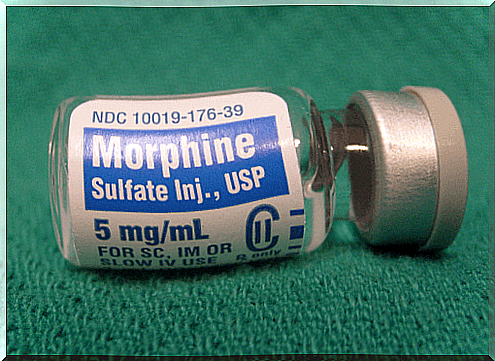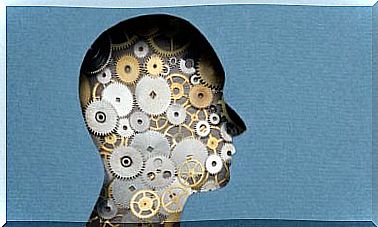Opiates, Drugs That Produce Addictive Effects

It all starts with a pain in your knees or perhaps a backache that has silently turned your attractive job into an irritating exercise. In other cases, it’s the migraine or the anxiety that we can’t shake off during the race against time our lives have turned into. The doctor prescribes us one of the many opiates and everything changes because they are the strongest pain relief medications. But they are also the most addictive.
When dealing with this topic, it is very likely that the name of some celebrity will come to our minds. Michael Jackson, Prince or Philip Seymour Hoffman passed away from addiction to tranquilizers and opioids of some kind. For example, fentanyl, a synthetic opioid pain reliever that is obviously purchased with a prescription.
As much as this type of outcome calls our attention, in which excess is combined with drama and drama with the incomprehension of others, there is an objective fact: this type of drug is causing more deaths than the drug cartel. It is not us who are saying this, but the well-known psychiatrist Allen Frances, one of the authors of the DSM-IV (Diagnostic and Statistical Manual of Mental Disorders) , who in recent years has become one of the main critics of the pharmaceutical industry.
Opiates are the most common pain relief drugs, but sometimes, and here’s the problem, the price we pay for them is too high. Furthermore, we use them blindly because we do not know their consequences in the medium and long term. Let’s talk more about them.

Opiates, the most addictive drugs
Opiates are, at first, a gift to our brain. The reason? Its active ingredients mimic the activity of endorphins, give us pleasure and reduce pain. Its action is therefore very useful in surgeries, in the treatment of acute, persistent, moderate pain and even to improve the quality of life of some cancer patients.
It is important here to differentiate opiates from opioids. The former refer to substances extracted directly from the opium plant, such as morphine. On the other hand, opioids, the most common, form all endogenous or exogenous substances that have an effect analogous to morphine and that can be synthetic or semi-synthetic.
How do they act?
There are immediate-acting opiates and opiates that we must take on a pre-established schedule. It doesn’t matter if at the moment we feel pain or not, the action of the drug prevents and regulates the onset of pain. All of this is achieved through a sophisticated mechanism in our brain. This is how it happens:
- These drugs reach our body to bind to specific opioid receptors (μ, κ, y δ ) in the nervous system and other tissues.
- All of these receptors are related to the Gi/o protein, which in turn acts by inhibiting the action of adenylate cyclase, opening potassium channels and closing presynaptic calcium receptors, thus decreasing neuronal excitability and, consequently, any kind of pain.
The action of opioids usually lasts, on average, between 3 and 4 hours. But synthetics can provide a much longer lasting effect. What a person feels when taking these drugs is a pleasant feeling of relaxation, a drastic reduction in anxiety, and often even a pleasurable sense of well-being.
Despite this, the effect is brief, limited, and comes at a very high price: our balance and our physical and mental health. Because when the “flooding” (flood) disappears and there is no longer bioavailability, our brain goes into a “panic” for not having such substances to maintain the regulation of many of its functions.
If we take these drugs for a certain amount of time, we will have created tolerance and, therefore, we will not be long in experiencing withdrawal syndrome.
Effects of opioids on our body
The effects of opiates and opioids vary depending on how long a person has been taking these drugs. However, we can differentiate the following steps:
- Early stage
- Skin heating.
- Drying of the mouth.
- Heavy ends.
- Nausea, itching.
- after 3-5 hours
- Somnolence.
- Miosis: pupil contraction.
- Constipation: These drugs often cause severe constipation.
- Confusion, minor visual hallucinations, dizziness, difficulty concentrating, anguish, apathy…
- Long term effects
- Digestive disorders: lack of appetite, chronic constipation.
- Cardiovascular changes.
- Arthritis and other rheumatic problems.
- Serious disorders of memory, attention and loss of motivation.
- Hallucinations, sudden mood swings, anxiety, insomnia…
- Venous inflammation.
- Skin and certain tissue infections.
- Liver diseases.
- Respiratory diseases…

The need to regulate the administration of opiates
Hippocrates defined opiates in his texts under the motto “Divinum opus est sedare dolores” (relieving pain is a divine work). In this case, it is necessary to contradict the Galen sage, remembering, once again, that it is the task of doctors and not of the gods to do this and, in turn, it is our responsibility to make good use of these substances.
It is common knowledge that a third of people who consume these substances for a month are tolerant and become addicted. It is also known that since 1999 opiate sales have quadrupled worldwide. Pharmaceutical companies do business with physical pain and the pain of life, so it takes more than simple individual awareness to deal with this reality. We also need adequate strategies on the part of governments, state agencies and medical centers in general.
Because sometimes back pain doesn’t need to be treated with an over-the-counter drug that requires a prescription. We need to look for other strategies.
Bibliographic references:
– Jesús Florez (2008) “Human Pharmacology” Barcelona: Masson









